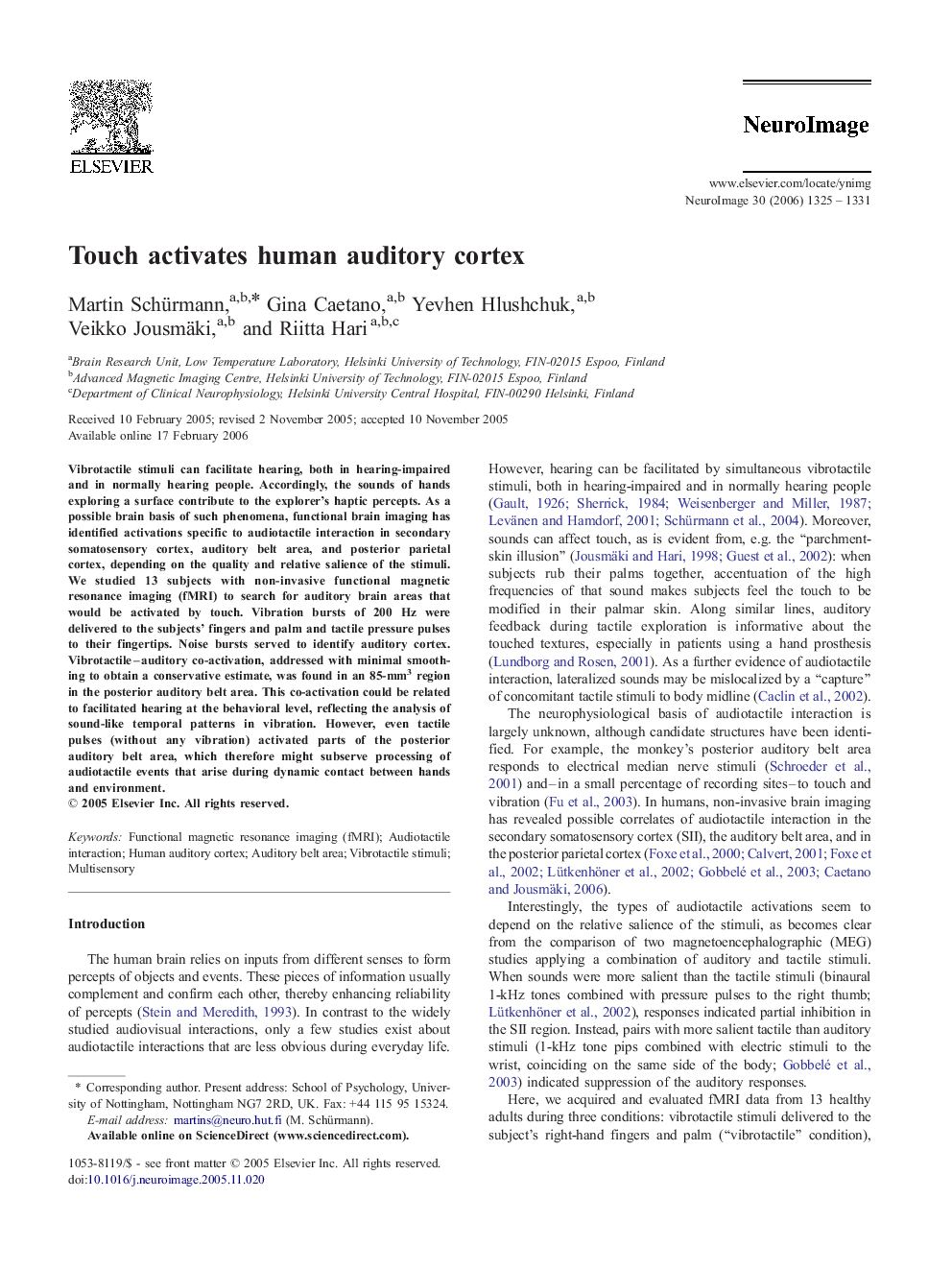| Article ID | Journal | Published Year | Pages | File Type |
|---|---|---|---|---|
| 3074022 | NeuroImage | 2006 | 7 Pages |
Vibrotactile stimuli can facilitate hearing, both in hearing-impaired and in normally hearing people. Accordingly, the sounds of hands exploring a surface contribute to the explorer's haptic percepts. As a possible brain basis of such phenomena, functional brain imaging has identified activations specific to audiotactile interaction in secondary somatosensory cortex, auditory belt area, and posterior parietal cortex, depending on the quality and relative salience of the stimuli. We studied 13 subjects with non-invasive functional magnetic resonance imaging (fMRI) to search for auditory brain areas that would be activated by touch. Vibration bursts of 200 Hz were delivered to the subjects' fingers and palm and tactile pressure pulses to their fingertips. Noise bursts served to identify auditory cortex. Vibrotactile–auditory co-activation, addressed with minimal smoothing to obtain a conservative estimate, was found in an 85-mm3 region in the posterior auditory belt area. This co-activation could be related to facilitated hearing at the behavioral level, reflecting the analysis of sound-like temporal patterns in vibration. However, even tactile pulses (without any vibration) activated parts of the posterior auditory belt area, which therefore might subserve processing of audiotactile events that arise during dynamic contact between hands and environment.
